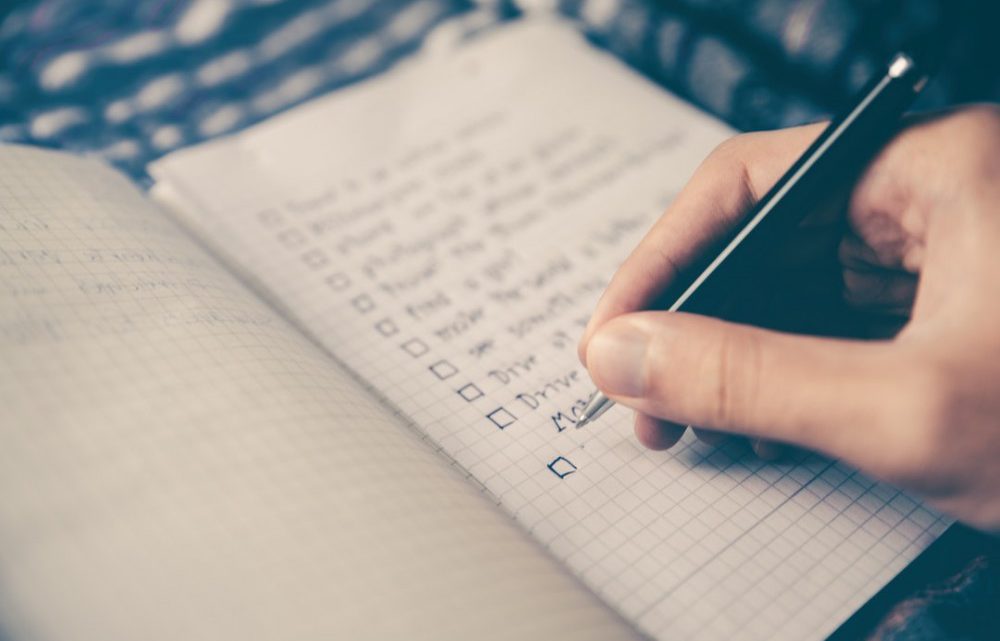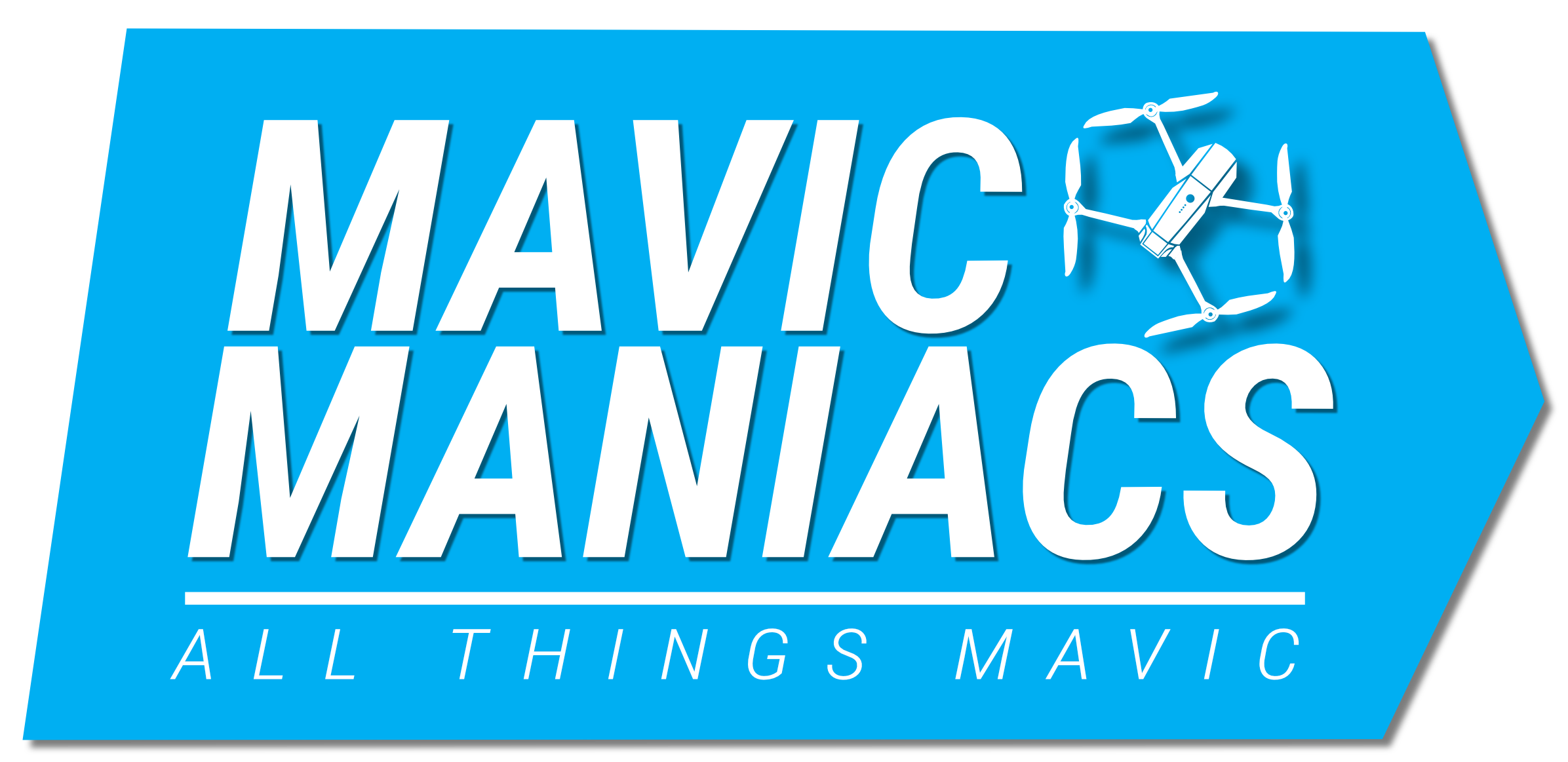
Mavic Pro Preflight Checklist – Steps to Take For Each Flight – Updated!
July 18, 2018Just like in the aviation industry, one of the keys to insuring a successful flight is the preflight check. This post will show you the steps to take before each flight and provide you with a base Mavic Pro Preflight checklist that you can customize and expand upon to fit your specific needs and even a different drone.
Update – Added a few more check boxes for things such as flight team briefing, verifying registration numbers are present and legible, obtain insurance if necessary and verifying all necessary paperwork is available if requested.
If you don’t yet have a drone, check out my DJI Mavic – Which One to Choose post.
THIS POST MAY CONTAIN AFFILIATE LINKS. PLEASE SEE OUR AFFILIATE DISCLOSURE FOR MORE INFORMATION.
Table of Contents
 Do I Really Need a Checklist?
Do I Really Need a Checklist?
The short answer is yes. Having a checklist will make sure you don’t miss any steps or repeat a step you already took because you can’t remember if you did it or not. Do yourself a favor and just use one. It would suck to be in the middle of your flight and realize you forgot to add, remove or change that ND filter on the camera or see your Mavic fall from the sky because you didn’t verify the props were seated correctly, etc.
What’s the Best Format for a Checklist?
This will boil down to personal preference. I’m a stickler for electronics and not having paper to drag around and waste (although I’m dragging around an electronic device). You have various choices from paper, apps, even a video or audio recording you play each time as you perform the walk through and so on.
Many people find having a physical piece of paper to check off as they perform their preflight check works best for them. I tend to lean toward a to do or checklist app that I can tick a box off as completed once I finish that particular task. Another benefit to the app method is the ability to customize it on the fly by adding, removing or modifying entries to make it custom to my particular use and situation. You can can do the same by quickly scribbling changes on a paper checklist as well, I just prefer to have the clean “professional” look of an electronic solution.
Whatever your preference, make it an actual checklist, not a paragraph listing everything but a line-by-line checkable list. Select a physical solution, don’t just commit it to memory. You take the chance of missing a step that could lead to a less than desirable flight experience.
 The Actual Checklist
The Actual Checklist
Below is the actual checklist that I use before each one of my flights. Feel free to use it as-is, take it and make it your own, even share it with others. My goal here is to help other drone professionals and enthusiasts to make each flight a safe and enjoyable one. This list will be pretty comprehensive. Some steps may not apply to you and you can remove them.
Before Heading Out to the Flight Location
- Check for Current App and Hardware Firmware Updates
- Apps are Fully Updated to the Latest Release
- Remote Controller is on the Latest Firmware Release
- Drone is on the Latest Firmware Release
- Phone/Tablet is Up-to-Date
- Charge All Devices to be Involved in the Planned Flight
- Remote Controller
- Drone
- Additional Batteries
- Phone/Tablet
- Accessories
- Check the Pertinent Information for the Planned Flight Location
- Airspace and Flight Restrictions – See my DJI Mavic Pro Apps – My Top Picks post for a list of apps I use to obtain this information.
- Contact Appropriate Authority for Notification/Authorization if Applicable
- Weather – See my DJI Mavic Pro Apps – My Top Picks post for a list of apps I use to obtain this information.
- Known Obstacles
- Events/Crowds Nearby
- Airspace and Flight Restrictions – See my DJI Mavic Pro Apps – My Top Picks post for a list of apps I use to obtain this information.
- Preprogram Flight Plan, if Applicable- See my DJI Mavic Pro Apps – My Top Picks post for a list of apps I use to plan and control my drone using a predefined flight plan.
- Pack All Items to be Used for Upcoming Flight – See my Essential DJI Mavic Pro Accessories – The Must Haves post for a list of accessories I can’t live without.
- Remote Controller
- Drone
- Additional Batteries
- Phone/Tablet
- Charger
- Launching/Landing Pad
- Extra Props
- Additional Accessories
Once Arrived at the Flight Location
- Scout the Planned Flight Area and note Obstacles, People, Animals, etc.
- Select Location to Conduct Flight Operations
- Select an Area to Control the Aircraft From and Maintain a Line of Sight at All Times
- Select and Area to Launch and Land the Aircraft
Before Taking Off
- Obtain Insurance if Necessary
- Verify all Necessary Documentation is Present
- Drone/Pilot Registration Card
- FAA Part 107 License
- Proof of Insurance
- Brief all Members of the Flight Team and Anyone Else Involved in the Operation
- Explain the Planned Mission
- Detail Each Member’s Responsibilities
- Discuss Abort Procedures and Alternate Landing Sites
- Make Sure all Questions are Answered
- Conduct Visual and Physical Inspection of the Drone
- Verify Registration Number is Present and Legible
- Remove Gimbal Cover and Clamp
- Verify Camera can Move Freely
- Confirm Arms are Fully Extended
- Check Props for Cracks and Signs of Wear
- Check Props are Seated and Secured Properly
- Check Drone for Cracks and Signs of Wear
- Check Battery for Cracks, Bulges and Signs of Wear
- Confirm Battery is Properly Seated and Locked in Place
- Verify microSD Card is Installed
- Verify the Correct ND Filter, if Applicable, is Installed Correctly
- Deploy Launching/Landing Pad
- Place Drone on Pad
- Connect Phone/Tablet to Remote Controller
- Power On the Remote Controller
- Launch Appropriate Application
- Power On Drone
- Verify Phone/Tablet, Application and Done Communication
- Allow Diagnostics to Complete
- Verify Hardware Status
- Compass
- IMU
- ESC
- Vision Sensors
- Battery Status
- Gimbal Status
- Verify GPS Satellite Lock
- Verify Radio Channel Quality
- Confirm Photo/Video Settings are correct for the Intended Flight
- Check Preferences

- Home Point Settings
- Multiple Flight Modes
- RTH Altitude
- Remote Controller Signal Lost Setting
- Obstacle Avoidance
- Backward Flying
- Vision Positioning
- Landing Protection
- Precision Landing
- RTH Obstacle Check
- Stick Mode
- Custom Button Settings
- Low Battery Warnings
- Smart RTH
- Gimbal Mode and Settings
- Live Broadcast – If Applicable
- Local Caching
- Verify Launch Are is Clear
- Take Not of Potential Emergency Landing Locations
- Takeoff
During Flight
- Hover at 15-30 Feet for 10 Seconds for Precision Landing Acquisition
- Maintain Line-of-sight
- Avoid Wildlife
- Avoid Obstacles
- Fly Safely
- Be Respectful of Privacy Issues
- Be Mindful of Battery Life
Before Landing
- Verify Landing Site is Clear and Safe to Use
- Return to Landing Location
- Perform a Manual or Automated Landing
After Landing
- Power Down the Aircraft
- Power Down the Remote
- Close the Application
- Power Down any Additional Accessories
- Perform a Physical Check of the Drone and Battery for any Indications of Damage or Wear
- Install the Gimbal Clamp and Cover
- Collect All Items
- Remote Controller
- Drone
- Additional Batteries
- Phone/Tablet
- Charger
- Launching/Landing Pad
- Extra Props
- Additional Accessories
- Log the Flight – If Applicable
- Return Home
- Begin Processing Footage – Check out my Post-production category for more programs, tips and sources to use in your post-production workflow.
- Share With the World
 Checklist Options
Checklist Options
You have many options when it comes to creating and using a checklist.
Paper – Go ahead and write one out or, better yet, type it out on your computer and print it to paper.
Applications – There are many applications you can use to create a checklist. They range from generic To-Do and Checklist apps to ones created specifically for the drone industry. Check out your respective app store for options. I personally use the free Notes app on my Mac OS and iOS devices. It syncs between devices and works pretty well.
Audio/Video – There are several audio and video based checklists out there. They’re basically someone going through the list and reading it out loud while they show screenshots or recordings of the settings and related material.
Memory – Not recommended. You can commit the list to memory and hope that you don’t forget something along the way.
As promised, here is my list in various formats for you to download and use as-is or modify to fit your needs:
Editable Microsoft Word Format: Mavic Pro Preflight Checklist by MavicManiacs
PDF Format: Mavic Pro Preflight Checklist by MavicManiacs
DartDrones has a shorter checklist that you may like to consider. Check it out here.
Conclusion
Well there you go, my comprehensive Mavic Pro preflight checklist, providing steps to take for each flight to help insure a successful outcome. Please let me know what you think. Did I omit something? Is it too much? Should I list it in a different order? Whatever the comment, I’d love to hear it. Just leave a comment below. I read and respond to each one.
Thank you,
Scott Hinkle
MavicManiacs.com





It just goes to show how naive i am about the world of flying drones, as i never presumed that you needed a flight check list. i always assumed that you let your drone fly around and that was all there was.. Your check list shows items like scouting the area, bringing spare batteries making sure that you have all the necessary items, something only a pro would check.
Thanks, I created this list in hope the that it might save someone a headache or even from missing a flight altogether because something was forgotten or missed.
thanks for your breakdown of steps to take before and after flying a drone, I believe this steps, i.e checklist also apply to every day Life activities. I’m actually looking at getting a drone, it’s nice to know all this tips and ideas. At least I can take proper care of my drone when I get one..thanks.
Abdulramon….
Hello Abdulramon,
I’m glad you found my post useful. You’re right, a checklist for most things would be beneficial to many. When you do decide to get your drone, please pop back on over here and let me know what you chose, or better yet, come here before you buy and see if any of my posts help you to make a decision.
Thanks for commenting.
Flying a drone comes with some pretty big responsibilities and legal implications. This is a bit intimidating for a newbie or someone considering purchasing a new drone, but it shows a lot of integrity on your part to publish this to help new drone pilots be fully prepared.
I suppose it wouldn’t seem so over-whelming after a couple of real flight experiences carefully following the checklist. Impressive hobbie or could be good for more serious business, but your checklist shows you really need to know what your doing to fly drones responsibly.
Hello Alexander,
My checklist is an attempt to be thorough and cover many aspects of drone operations. It can be customized, shortened, lengthened (ugh) and so on. My true intent to to give pilots something to consider and make sure they have the whole picture in their head before they fly.
Once you’ve done it a couple of times, it will become second nature and will not seem daunting at all. I hope you get the chance to get out there and fly.
Thank you,
Scott